Heading out the door? Read this article on the new Outside+ app available now on iOS devices for members! Download the app.
If you’re like most folks these days, you’ve got a lot on your plate and even more on your mind. Everyone has busy periods—and everyone gets tired. But when you’re exhausted down to your bones and can’t seem to shake your weariness, you may be headed for burnout.
“Burnout happens when you’re overwhelmed, emotionally drained, and unable to keep up with life’s incessant demands,” according to health experts. It’s the result of relentless stress—mental, physical, or emotional.
Signs of burnout: You’re feeling constantly frustrated, irritated, or cynical. You can’t seem to focus or get things done. You’ve lost your enthusiasm for things you used to care about. If you feel this way, it’s time to take action. Experts suggest moving some things off your plate so your workload is more manageable, getting more sleep, practicing mindfulness, and taking up relaxing activities like yoga. In particular, you need restorative yoga.
See also: Burned Out? You’re Going to Need More Than a Bubble Bath to Bounce Back
What is restorative yoga?
“Restorative yoga is a receptive form of yoga that requires no physical exertion,” says Gail Parker, PhD, author of Restorative Yoga for Race-Based Stress and Trauma. Poses are supported and held still to avoid stimulating the nervous system, which helps minimize stress and tension. “The entire practice, from the very first pose to the very last one, is designed to stimulate the parasympathetic nervous system, the part of the involuntary nervous system that supports rest and recovery,” she says.
In restorative, you’re working—or not working, in this case—to invoke the relaxation response, the very opposite of fight or flight. The relaxation response, a technique developed by Herbert Benson, M.D., promotes “a physical state of deep rest that changes a person’s physical and emotional responses to stress.”
The rest of the restful yoga techniques
There are other rest-focused forms of yoga, but don’t confuse restorative with yoga nidra or Yin Yoga.
“Yin Yoga emphasizes passive, static postures, held for long periods of time, with muscles in a relaxed state,” writes Josh Summers, founder of the Summers School of Yin Yoga. You may settle into one Yin pose for 3–7 minutes or more, to give the joints, ligaments, and connective tissues time to absorb the effects of the posture. Then you move to another pose. Yin sequences tend to be quiet and slow, but challenging because of how long the poses are held.
Yoga nidra is a specific technique for shifting the brain from an awakened state to a deeply relaxed state where emotional integration and physical regeneration can happen. “Each time you practice yoga nidra meditation, you’re stilling the waves of the mind through conscious entry into the sleep state,” according to Karen Brody, author of Daring to Rest: Reclaim Your Power with Yoga Nidra Rest Meditation. In yoga nidra, you don’t move around at all. You lie still in Savasana, and focus on breathing and progressively relaxing the body.
There’s no reason you can’t incorporate all three types of yoga practice into your self-care routine, depending on what you need.
See also: Use the 70 Percent Rule to Be Happier & Avoid Burnout
What is a restorative yoga class like?
In-studio restorative yoga classes tend to require a ton of props. You may need several blankets for padding, wrapping, cocooning, and covering the body for warmth and comfort. You may use bolsters, rolled yoga mats, blocks, straps, sandbags, and eye pillows. At home, however, you can use bed pillows, sofa cushions, rolled towels, blankets, and other supportive materials. The goal is to provide your body with as much support as possible. Your job in restorative is to do nothing.
“The use of props minimizes muscular tension and maximizes physical comfort, allowing the body to remain still in postures for extended periods of time,” says Parker.
It is not uncommon to do only three or four postures in an hour-long restorative class. Restorative teachers take care in instructing and assisting your set up, then allow plenty of time for you to settle into a pose.
See also: How My Restorative Practice Is Helping Me Heal
When should you do restorative yoga?
Restorative yoga tends to put you in a very relaxed state, so some people prefer to do it at a time when they can continue to rest. But it can be done any time you have the space and support. Parker recommends incorporating restorative yoga into your routine once a week to encourage good health and equilibrium.
Try some of the sessions and sequences below to help pave your path to rest.
Outside+ members get access to the full text of all of Yoga Journal‘s practice content—including sequences like the ones below—to help you find your peaceful place. You also get access to our complete archive, from inspirational stories to meditation methods. Not a member? What are you waiting for? Sign up today.
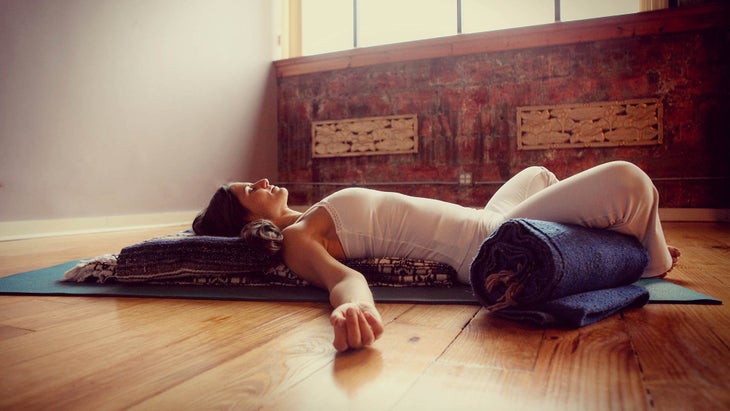
How to Start a Restorative Yoga Practice
Restorative practice can be intimidating to beginners—all those props! But just a few guiding tips from Claudia Cummins will help you start a regular restorative practice of your own.

7 Tips to Get More Out of Your Restorative Yoga Practice
Whether you’re new to restorative yoga or a seasoned pro, little tweaks can help you get more relaxation out of your practice. From longer holds to deeper breathing to props to prep, Jillian Pransky shares seven ways to get the most out of your restorative practice.
Bonus: Learn more about restorative yoga with Jillian’s Restorative 101 course
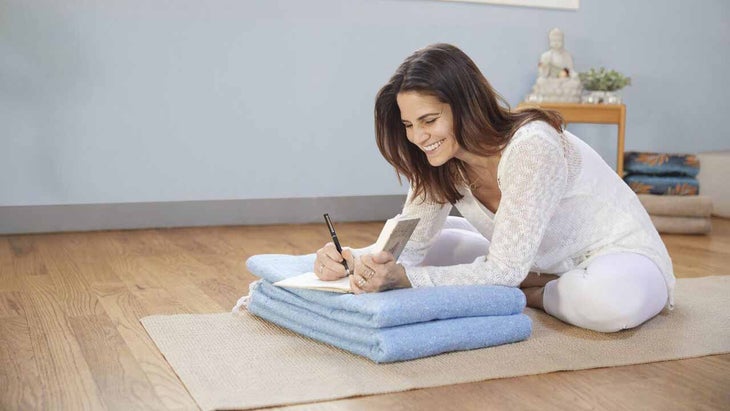
This Restorative Yoga Practice Will Help You Find Serenity, Now
Yes, restorative yoga is, well, restorative. But it is also an advanced practice that requires a tremendous amount of dedication, patience, skill, courage, and compassion. It challenges us to slow down, relax, and be with ourselves. “I created this restorative yoga practice to help you relax but also to help you transition back into your day-to-day pursuits in a more mindful way, so you can make more-nourishing choices all day long,” says Jillian Pransky.
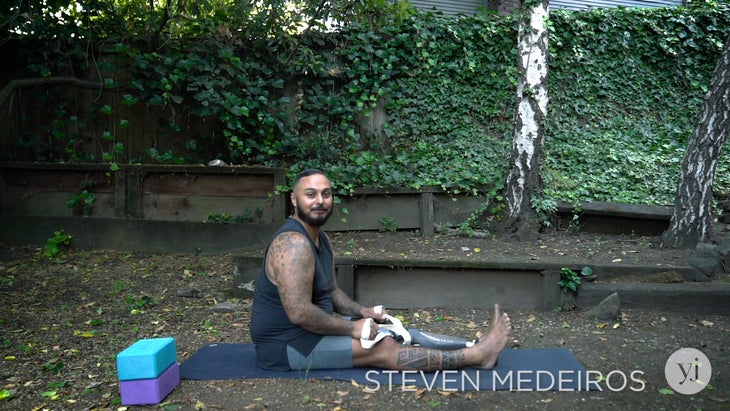
Try This Restorative, Hip-Opening Yoga Sequence for Ultimate Rejuvenation
Create more space in the back, the shoulders and chest with this empowering Restorative Yoga demonstration by Steven Medeiros.
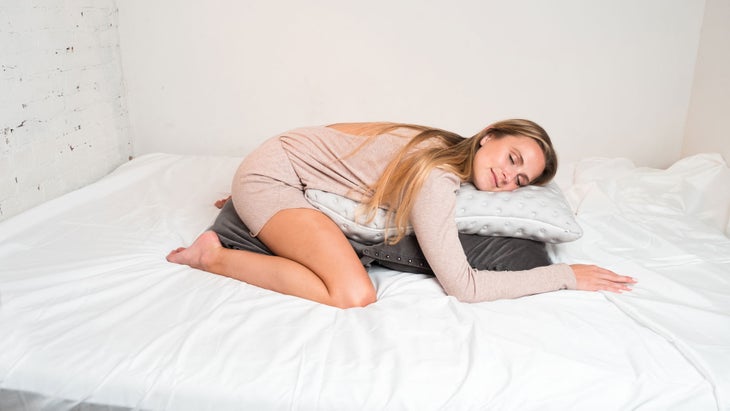
Pillow Poses: Relaxing Restorative Yoga You Can Do In Bed
Can we all agree that after an evening restorative class, one of the biggest challenges can be traveling the distance from our yoga mats to our bed? This practice from Jenny Clise, a New York City-based yoga teacher, is designed to soothe your nervous system, increase flexibility, and calm your mind after a full day—and you can do it all from the comfort of your bed.
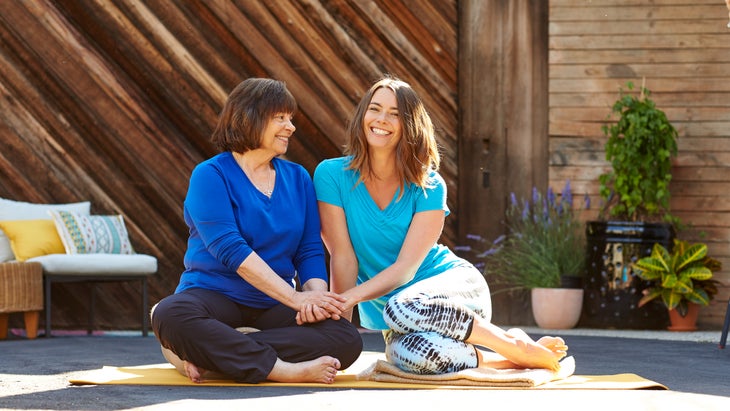
Bonus: 10-Day Restorative Yoga Retreat
If you’re looking to learn more about restorative yoga, join Judith Hanson Lasater and Lizzie Lasater for a 10-day, on-demand experience that includes daily video lessons and practices, and explores the mentality around restorative yoga. At the end of 10 days you’ll feel a sense of deep emotional well-being that you can carry into your daily life.
Access all these practices—and so much more—with your Outside+ membership. Learn more and sign up today!